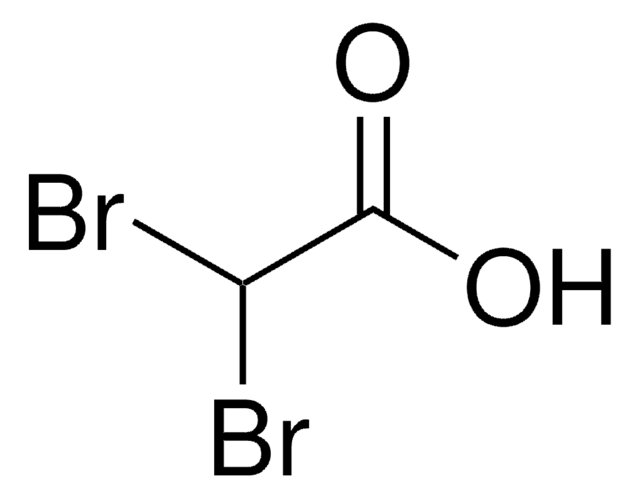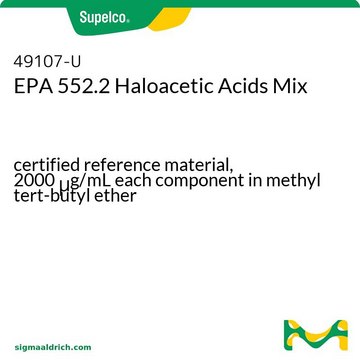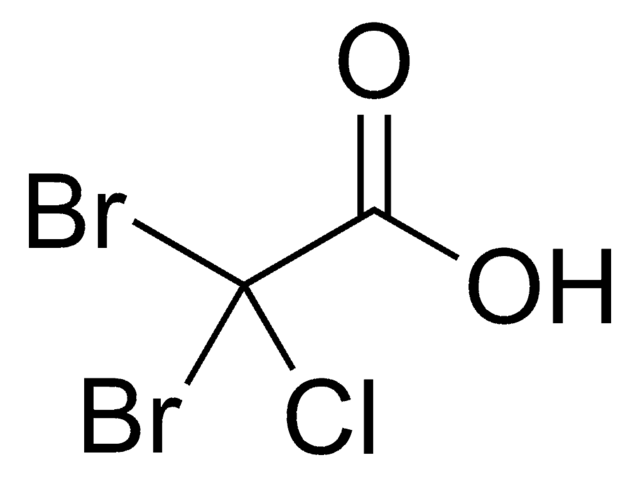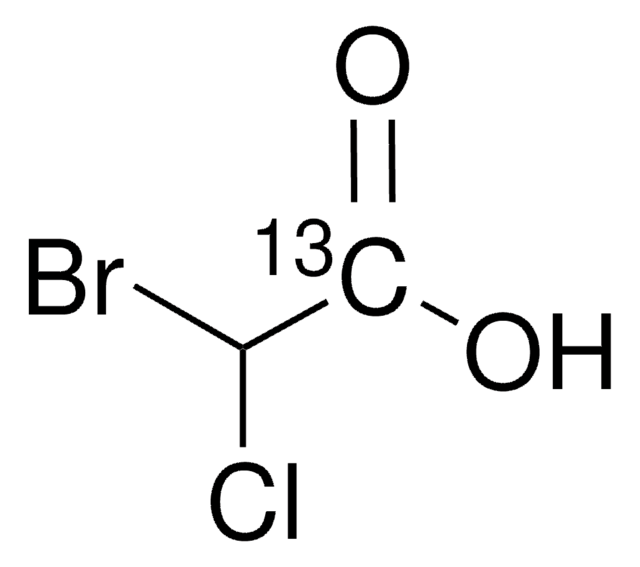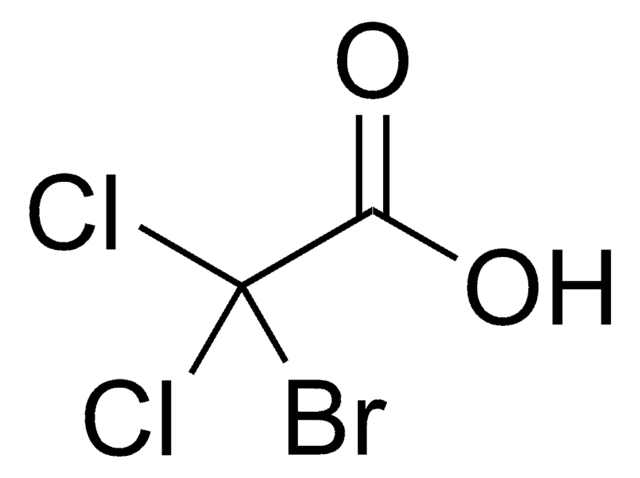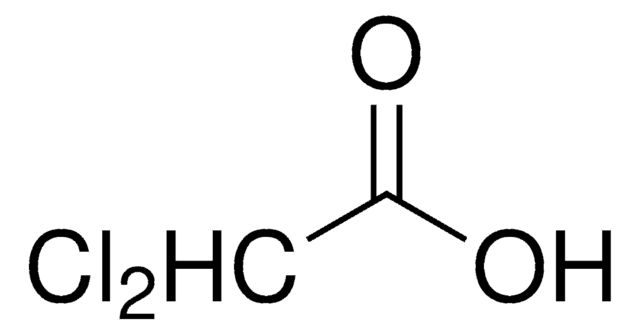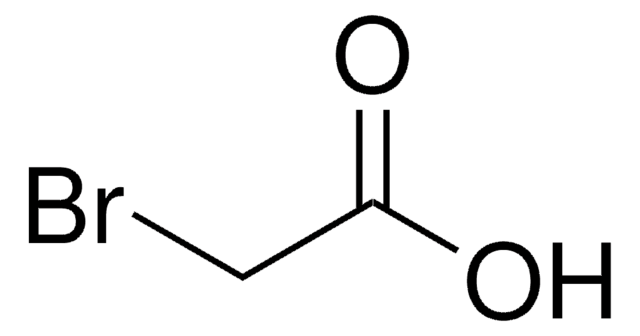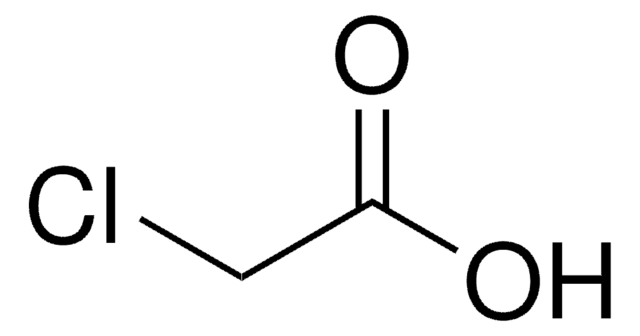All Photos(3)
About This Item
Linear Formula:
BrClCHCOOH
CAS Number:
Molecular Weight:
173.39
Beilstein:
1720556
MDL number:
UNSPSC Code:
12352106
PubChem Substance ID:
NACRES:
NA.22
Recommended Products
Assay
95%
refractive index
n20/D 1.51 (lit.)
bp
210-212 °C/767 mmHg (lit.)
mp
27.5 °C (lit.)
density
1.985 g/mL at 25 °C (lit.)
functional group
bromo
carboxylic acid
chloro
SMILES string
[H]C(Cl)(Br)C(O)=O
InChI
1S/C2H2BrClO2/c3-1(4)2(5)6/h1H,(H,5,6)
InChI key
GEHJBWKLJVFKPS-UHFFFAOYSA-N
Looking for similar products? Visit Product Comparison Guide
Signal Word
Danger
Hazard Statements
Precautionary Statements
Hazard Classifications
Eye Dam. 1 - Skin Corr. 1B
Storage Class Code
8A - Combustible corrosive hazardous materials
WGK
WGK 3
Flash Point(F)
230.0 °F - closed cup
Flash Point(C)
110 °C - closed cup
Personal Protective Equipment
dust mask type N95 (US), Eyeshields, Gloves
Choose from one of the most recent versions:
Already Own This Product?
Find documentation for the products that you have recently purchased in the Document Library.
Douglas B Tully et al.
Reproductive toxicology (Elmsford, N.Y.), 19(3), 353-366 (2005-02-03)
A byproduct of drinking water disinfection, bromochloroacetic acid (BCA), acts as a reproductive toxicant in rats. To determine if BCA produces similar reproductive toxicity in mice, juvenile and adult C57BL/6 males were exposed to 0, 8, 24, 72 or 216
B Ells et al.
Analytical chemistry, 71(20), 4747-4752 (1999-11-05)
The lower limit of detection for low molecular weight polar and ionic analytes using electrospray ionization-mass spectrometry (ESI-MS) is often severely compromised by an intense background that obscures ions of trace components in solution. Recently, a new technique, referred to
D Martínez et al.
Journal of chromatography. A, 808(1-2), 229-236 (1998-07-04)
A capillary zone electrophoresis (CZE) system for determining haloacetic acids in water was optimized with indirect photometric detection. Two different carrier electrolytes, potassium hydrogenphthalate and sodium 2,6-naphthalenedicarboxylate, were evaluated in terms of sensitivity and two different electroosmotic flow modifiers, tetradecyltrimethylammonium
Stereospecific toxicokinetics of bromochloro- and chlorofluoroacetate: effect of GST-zeta depletion.
I R Schultz et al.
Toxicology and applied pharmacology, 175(2), 104-113 (2001-09-07)
The chloro- and bromohaloacetates are drinking water disinfection by-products and rodent carcinogens. Chloro-bromo dihaloacetates are also mechanism-based inhibitors of glutathione S-transferase-zeta (GSTZ1-1). We studied the stereospecific toxicokinetics and in vitro metabolism of two chiral dihaloacetates in male F344 rats: (-),(+)-bromochloroacetate
Xiaoling Zhang et al.
Toxicology, 289(2-3), 151-159 (2011-08-26)
Bromate (BrO(3)(-)) is a drinking water disinfection by-product (DBP) that induces renal cell death via DNA damage-dependent and -independent mechanisms. Drinking water contains other DBPs in addition to BrO(3)(-). We tested the effect of two of these, sodium chlorite (NaClO(2))
Our team of scientists has experience in all areas of research including Life Science, Material Science, Chemical Synthesis, Chromatography, Analytical and many others.
Contact Technical Service